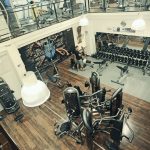April 15, 2020 — The coronavirus crisis activated 3D printers across Croatia, with an impromptu unification of about 100 people all around the country providing medical professionals with much-needed supplies, according to Jutarnji List.
Among the more active are Osijek residents, who have printed about five hundred protective visors for medical professionals every week since the crisis began.
The whole initiative started virtually, via a Facebook group.
“We have a group called ‘3D print experts Croatia,’ which is the largest gathering our kind in our country,” IT expert Valent Turković told the paper. In addition to making visors, he and a colleague coordinate the collection and distribution of 3D-printed materials to area hospitals.
“The idea started from many directions, from all over Croatia. Medical visors of this kind are a new solution, recently created in the Czech Republic,” Turković added.
In accordance with the huge demand for protective medical devices, the Czech company Prusa3D designed the mask and made its schematics public.
“This information immediately came to our group and people started printing, and some even optimized the design,” Turković said, adding that Split’s University was among the first to start production systematically.
People with 3D printers and enthusiasm for helping began to appear on all sides. Turković said the Facebook group created questionnaires for everyone and then grouped people together by region to bring together those with more and those with less experience.
One or two people were selected in each city to collect masks and deliver them to hospitals.
“Often, people often want to take the mask to the hospital as soon as they print the mask, but for security reasons, it is definitely a recommendation that they contact us from the group and allow us to make the delivery,” Turković added.
The biggest challenge for them right now is getting plastic parts for visor masks, that is, films or resistant overhead films.
All the masks they make, he says, go to public health services for free. They receive inquiries from private clinics, which they reject.
The masks protect the whole face and covering the eyes, though doctors still wear surgical masks underneath them.
The solution, doctors said, is much better than plastic glasses, which blur their eyesight and often fog up. Turković the 3D printers cannot keep up with demand.
“We try our best to supply everyone, but we just need time,” he said.
The electrical engineering school in Varaždin has designed how to print protective visors for doctors faster and cheaper on 3D printers.
The first model, created by a Czech 3D modeling company, required eight hours of printing for one visor, and the Varaždin residents reduced this to one hour per visor. This also reduced the production cost from HRK 40 apiece to about HRK 25.
Two doctors from Varaždin General Hospital suggested printing the visors when the school took the idea and ran with it.
Overall, the campaign, led largely by the student population, is attended by people from 45 cities with about three hundred 3D printers.
It all started at the FESB in Split and the Student Union of the University of Split got involved, who shared the student invitation on Facebook and the avalanche was triggered. In less than 18 hours after the announcement, 120 students and about a hundred 3D printers joined the action.
Printers have emptied domestic plastic material suppliers. Specifically, a special plastic material used in printing, costing up to HRK 200. Fortunately, all those who have the material who don’t have printers donated their supplies and quickly returned production to full capacity.









